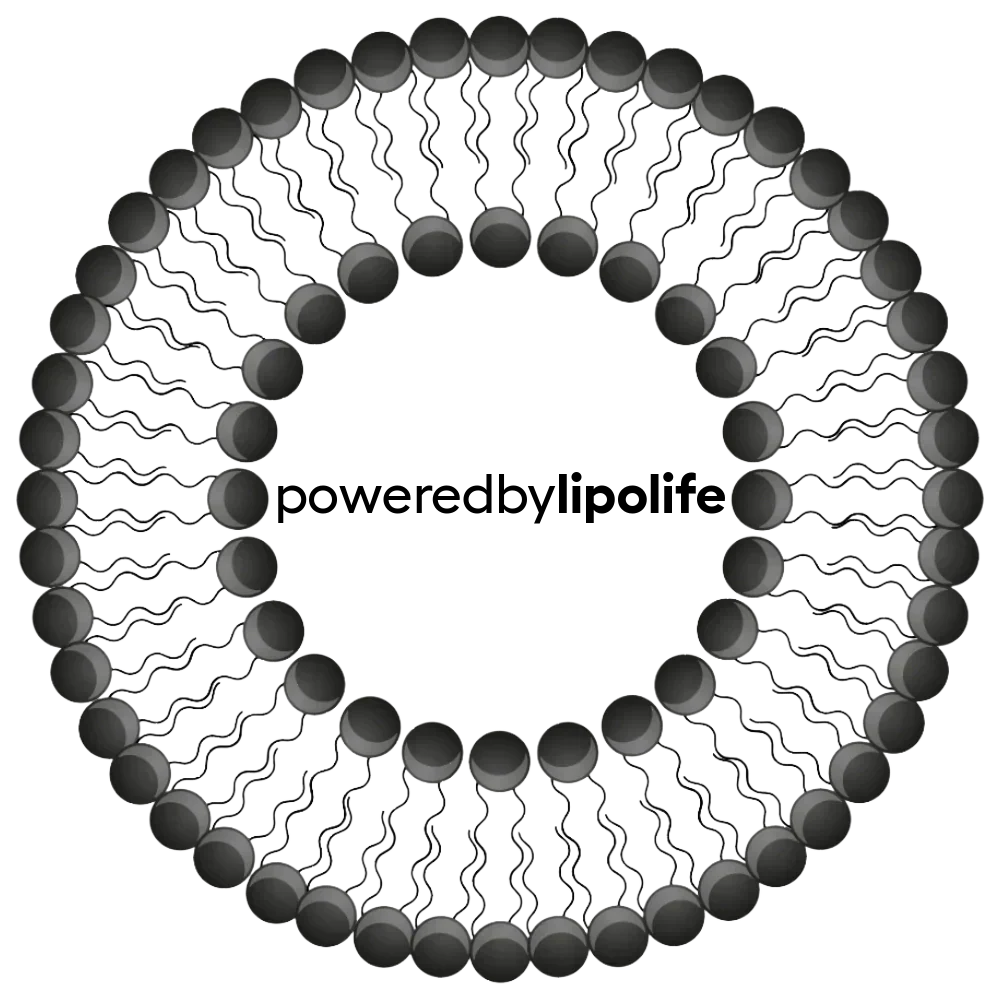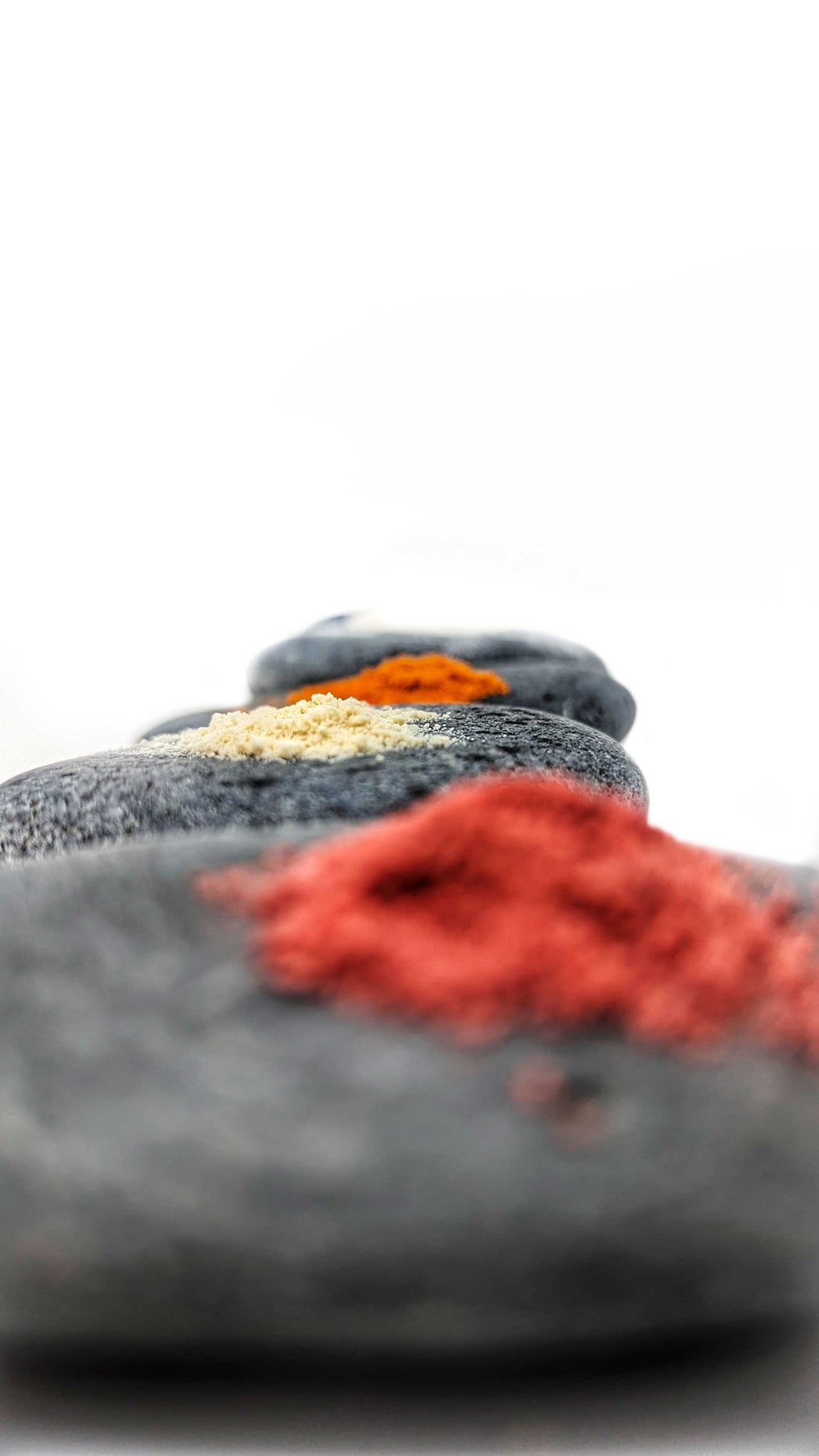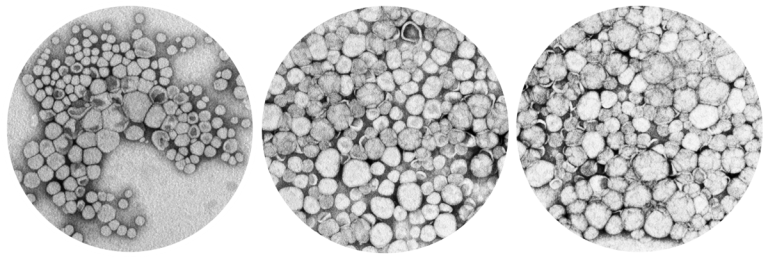Knowledge Hub
Why lipolife® is the #1 Scientifically Proven Liposomal Supplement Brand
In the crowded world of supplements, one name is setting the gold standard in efficacy, innovation, and trust: lipolife®. Backed by peer-reviewed studies, trusted by clinical researchers, and proven in pharmacokinetic trials, lipolife® liposomal supplements are not just another wellness trend, they're the future of bioavailable nutrition. What sets lipolife® apart? The Science. While many brands claim liposomal delivery, lipolife® is the only brand with robust clinical evidence supporting its liposomal formulations. Multiple independent studies have featured lipolife® products, not generics, not theoretical liposomes - real, batch-verified lipolife® formulations. This distinction matters. Here’s a detailed look at some of the published research supporting lipolife® products across a range of clinical and preclinical models. 1. Liposomal CoQ10 Multiple studies highlight the antioxidant, anti-inflammatory and organ-protective roles of lipolife® liposomal CoQ10: Paracetamol-induced liver injury: Liposomal CoQ10 reduced hepatic apoptosis, DNA damage, and inflammation (Alhusaini et al., 2022, JKSUS). Propionic acid-induced neurotoxicity: In combination with acetyl-L-carnitine, it attenuated neuroinflammation and oxidative injury (Alhusaini et al., 2022, Biomedicine & Pharmacotherapy). Propionic acid-induced liver fibrosis: It significantly reduced liver inflammation and fibrosis markers (Alhusaini et al., 2023, IJMS). Mercuric chloride toxicity: Liposomal CoQ10 modulated the STAT5A/PTEN/PI3K/AKT signaling pathway, preventing multiorgan toxicity (Kadry & Abdel Megeed, 2022). These findings position lipolife® CoQ10 as a powerful adjunct for oxidative stress-related conditions. 2. Liposomal Resveratrollipolife® Resveratrol has been extensively studied for its protective roles in cardiotoxicity and renal injury: Cardiotoxicity prevention: When combined with carvedilol, it attenuated doxorubicin-induced heart damage by modulating inflammation and S100A1 signaling (Alanazi et al., 2020, Antioxidants; Alanazi et al., 2020, J Biochem Mol Toxicol). Renal protection: Demonstrated efficacy against isoproterenol-induced kidney injury via MAPK and Fas signaling (Alhusaini et al., 2024, Saudi Pharmaceutical Journal) and against doxorubicin-induced renal toxicity by modulating Beclin-1/mTOR (Alhusaini et al., 2022, Frontiers in Pharmacology). These studies confirm lipolife® Resveratrol's potential in protecting vital organs from pharmaceutical-induced toxicity. 3. Liposomal Curcuminlipolife® Curcumin has shown therapeutic effects in both hepatic and reproductive toxicity models: Copper-induced liver injury: Reduced oxidative stress, inflammation, and DNA damage (Alhusaini et al., 2018, Dose-Response). Copper-induced reproductive toxicity: Improved reproductive hormone levels and Nrf2/HO-1 signaling in male rats (Sarawi et al., 2022, Toxics). Curcumin’s poor bioavailability is well-known, but these studies suggest lipolife® liposomal delivery significantly enhances its therapeutic effect. 4. Liposomal GlutathioneIn a novel detection study, liposomal glutathione played a central role in the development of a turn-on fluorescence sensor system, validating its intracellular delivery potential (Nedeljko et al., 2018, Journal of Sensors). 5. Liposomal Zinc ZDDTC, a metal complex with anticancer properties, was encapsulated in liposomes for targeted colorectal cancer treatment. lipolife® formulation enhanced its therapeutic profile (Ansari-Fard et al., 2022, British Journal of Pharmacy). 6. Liposomal Vitamin C and QuercetinA narrative review on burn management highlights the potential use of liposomal vitamin C and quercetin, such as those developed by lipolife®, to modulate inflammation and support tissue regeneration in wound care (Abdul Rasool et al., 2022, Sci. Pharm.). 7. Regulatory Recognitionlipolife® was specifically cited in a UK Government Commission on Toxicity (COT) discussion paper (TOX/2023/27) evaluating the safety and bioavailability benefits of novel supplement formulations, lending further credibility to its scientific integrity. lipolife® stands out as one of the most thoroughly researched liposomal supplement brands on the market. lipolife® formulations are not only grounded in robust scientific research but also acknowledged by regulatory bodies, positioning lipolife® at the forefront of the liposomal nutraceutical field. Trusted by Researchers. Verified by Science. Recommended by Practitioners. From oncology to sports medicine, lipolife® is the liposomal brand that researchers choose when outcomes matter. It's also the only UK liposomal supplement company to operate its own GMP-certified liposome manufacturing lab. Every batch is tested for particle size, encapsulation efficiency, and stability. Think All Liposomes Are the Same? Think Again.While other brands rely on vague claims or made up science for marketing headlines, lipolife® offers full traceability, published clinical use and transparent lab testing. No unverified delivery tech. No "nano" buzzwords with no backing. No compromise. If it doesn’t say lipolife®, it’s just not proven. The Future Is Liposomal and lipolife® Is Leading It With more peer-reviewed publications, clinical collaborations and measurable performance data than any other brand, lipolife® stands alone as the #1 scientifically validated liposomal supplement company in the world. Don’t settle for claims. Demand proof. Choose lipolife®.
Learn moreLiposomal Capsules
Genuine liposomal capsules from #1 scientifically proven liposomal brand* *Independently, third party verified for authenticity. Alishia Farrington, Nutritional Therapist Liposomal capsules encapsulate nutrients within liposomes, tiny spherical vesicles with a phospholipid bilayer. This structure mimics cell membranes, allowing for better absorption and protection of the encapsulated nutrients. The encapsulated liposomes are then dried and placed into capsules, offering a convenient and efficient delivery method. The development of dry liposome powder represents a significant innovation in the field of drug delivery and nutritional supplements. This technology offers numerous potential uses and advantages over traditional liquid liposomal formulations, enhancing the efficacy, stability, and convenience of liposomal products. what are the benefits of liposomal capsules? Improved PalatabilityEncapsulation in capsules helps mask the taste of the active ingredients, making them more palatable. For example, Glutathione in its raw form can have a sulphur-like taste, which many find unpleasant. This has been a major drawback for oral glutathione supplements, even when using flavours to mask the taste. The capsule form is straightforward to consume, with no lingering taste or odour and still with the benefit of liposomal delivery. Enhanced StabilityDry liposome powders exhibit significantly greater stability compared to liquid formulations. Removing water from the liposomes prevents degradation and hydrolysis, extending the shelf life of the product. ConvenienceCapsules are easy to take and dry liposomal supplements are easier to store and transport than liquid formulations. They do not require refrigeration and are less prone to leakage or spoilage, making them more convenient for distribution, export and use in various environments. Don’t be swayed by false marketing As ever, there is misinformation being circulated by other liposomal brands prompting questions such as “doesn’t liposomal Vitamin C need to be liquid?” No! Those companies or brands who say yes, simply haven’t mastered the technology. “If water is removed, it cannot maintain its three-dimensional shape. This leads to a loss of the structural shape. This means that liposomal powders in the conventional sense do not exist.” (so says unnamed liposomal brand) Allow us to conduct a very quick science lesson. Liposomes can be converted into a stable powder form through processes such as freeze-drying (lyophilisation) or spray drying. During freeze-drying, water is removed under low temperature and vacuum conditions, preserving the structural integrity of the liposomes. Rely on the Science Independent Third Party TEM Analysis of lipolife® dry liposomes The addition of cryoprotectants during the drying process helps maintain the liposome structure and functionality by preventing aggregation and fusion. Liposomal powders can be reconstituted by adding water or other suitable solvents, which allows them to regain their original liposomal structure and properties. This can also occur upon ingestion. Upon reconstitution, the phospholipid bilayer reforms, encapsulating the vitamin C as it did in the liquid form. lipolife® have independent, third party evidence demonstrating that our liposomal powders retain their encapsulation efficiency and particle size after reconstitution. These studies also prove that the structural integrity and functional properties of liposomes can be preserved even after the water is removed and then reintroduced. Why Researching Before You Buy Dry Liposomal Capsules Is Essential for Your Health - and Your Wallet If you are looking to support your overall health and wellbeing, supplements can be a powerful tool, if you choose the right ones. Among the most innovative options on the market today are dry liposomal capsules, which offer enhanced nutrient absorption. However, not all liposomal products are what they seem and it’s crucial to research thoroughly before making a purchase. Understanding the science behind liposomal capsules and the credibility of the manufacturer can make all the difference in ensuring you get a product that actually works. What are Dry Liposomes? Before diving into why research is essential, let’s break down dry liposomes. In the simplest terms, liposomes are tiny spherical vesicles made from phospholipids, which are the same type of fat molecules that make up our cell membranes. These liposomes are designed to encapsulate and protect nutrients, such as vitamins, enhancing their delivery and absorption in the body. Dry liposomal capsules are an advanced form of this technology, where the liposomes are in a powdered form rather than suspended in a liquid. This form can be more convenient and stable but it’s also where the potential for misleading products arises. The Risks of Not Researching Imagine purchasing a supplement labelled as “liposomal vitamin C” only to discover that it barely contains any vitamin C at all, let alone in liposomal form. This scenario is more common than you might think. The supplement industry is vast and largely unregulated, leading to the proliferation of products that don’t live up to their claims. When it comes to liposomal capsules, the risks of buying an ineffective product are particularly high. Here’s why: Complex Manufacturing Process: Creating true liposomes, especially in a dry form, requires advanced technology and expertise. Not all manufacturers have the necessary equipment or know-how, leading to products that don’t contain actual liposomes. False Claims: Some companies may market their products as liposomal without actually delivering the liposomal benefits. They might use the term “liposome” as a buzzword to attract consumers, even if their product doesn’t meet the scientific criteria. Degraded Ingredients: In some cases, the nutrients within a liposomal capsule might degrade during manufacturing or storage, rendering them ineffective by the time they reach you. Product A on the left - example of fully dispersible dry liposomes (lipolife®)Product B on the right - example of non-dispersible dry liposomes (redacted) How to Ensure You’re Buying a Genuine Dry Liposome Supplement Given these risks, how can you ensure the liposomal capsules you’re buying are authentic and effective? Check the ScienceLook for manufacturers who provide detailed information about their liposomal technology. They should be transparent about the processes they use to create dry liposomes and the studies backing their products. Verify the IngredientsMake sure the product contains the nutrient in question in the advertised liposomal form. The ingredient list should specify the presence of phospholipids and other components that make up the liposome. Research the ManufacturerInvestigate the company’s reputation. Are they known for producing high-quality supplements? Do they have a history of transparency and adherence to scientific standards? Reviews, third-party testing, and certifications are good indicators of credibility. Look for Independent TestingReputable manufacturers often submit their products for independent testing to verify the quality and effectiveness of their liposomes. Look for products that have been third-party tested, and check if these results are available for public viewing. Read Customer ReviewsWhile not always fool proof, customer reviews can provide insight into the real-world effectiveness of the supplement. Be wary of reviews that seem too good to be true or that don’t provide any detail about the product’s effectiveness The Benefits of Doing Your Homework By taking the time to research, you’re more likely to end up with a supplement that delivers the benefits it promises. Authentic dry liposomal capsules can offer superior nutrient absorption, leading to better health outcomes. Whether you’re looking to boost your immune system with liposomal Vitamin C or support other aspects of your health, ensuring the product’s authenticity is key. In a largely unregulated market flooded with supplements, the responsibility falls on consumers to make informed choices. Dry liposomal capsules offer cutting-edge benefits, but only if they are produced correctly and come from a credible, specialised manufacturer. Before you invest in your health, invest a little time in research. Your body and your bank balance will thank you. Your browser does not support the video tag. The lipolife® proof is in the formula BUY LIPOLIFE CAPSULES
Learn moreHow liposomal supplements work: 3 common misconceptions to avoid
Did you know that some supplements claiming to be liposomal don’t actually contain any liposomes at all? Dr. Hanan Abdalmaula, Head Formulation Scientist at lipolife, says, “[N]ot all supplements are created equal. In some cases, people will be unknowingly buying supplements… which contain a tiny portion of what is stated on the label. People deserve better, and we need to build trust in the supplement industry by helping the public identify good quality products. Products that will genuinely help them achieve their health goals”. Here are three misconceptions to bear in mind when buying liposomal supplements. But before we get into that, you need to know how liposomal supplements work in the first place… How do liposomal supplements work? A large proportion of a standard oral supplement – sometimes as much as 80-90% – can be broken down by the digestive system and excreted without ever doing you much good. But liposomal supplements have a much greater rate of absorption. Liposomes are tiny, nano-sized bubbles made of phospholipids and containing the vitamin or mineral being supplemented. Phospholipids are also found naturally in the body in cell membranes and the lining of the stomach. This means that the body recognises the phospholipids which liposomes are made of and allows them – and the vitamin or mineral they are carrying! – to enter the circulation and be absorbed directly into cells in the body. The vitamin or mineral is then released into the cell. The phospholipids also protect the supplement as it passes through the stomach. This way far less of the supplement is wasted and it can actually help you in the way it’s supposed to! “It’s all about better bioavailability when vitamins and nutrients are taken as a liposome,” says Professor Mohammad Najlah, Professor of Pharmaceutics and Nanomedicine, Lead of Anglia Ruskin University’s Pharmaceutical Research Group, and Chief Scientist at lipolife. But while liposomal supplements might have greater bioavailability than standard supplements, not all liposomal supplements are created equal either… and some of the claims or assumptions being made about them just aren’t true. Here’s what you need to be aware of. 3 common misconceptions to avoid when buying liposomal supplements 1. THE THICKNESS OF THE LIQUID DOESN’T HAVE ANYTHING TO DO WITH HOW MANY LIPOSOMES IT CONTAINS A product can be thick without containing a high concentration of liposomes. Likewise, a product can be thin, or watery, while still containing a high concentration of liposomes! Whether or not the product is ‘thick’ is to do with the liquid itself. For instance, the thickness or viscosity of a liquid is hugely affected by the addition (or not) of thickening agents. Commonly known thickening agents include gelatin and corn starch. So whether or not your liposomal product is thick or thin doesn’t necessarily have anything to do with its liposome content. 2. IF YOU’RE SWALLOWING IT, A SUPPLEMENT CAN’T AVOID THE DIGESTIVE SYSTEM – OR BE DIGESTED IN A COUPLE OF MINUTES Any oral product must go through the digestive system. There’s no avoiding it. And it can’t be digested in a matter of minutes. Transit time through the stomach is one to two hours, at which point the nutrient reaches the intestine where absorption takes place. Once absorbed, the nutrient is released and reaches systemic circulation to exert its therapeutic effect. 3. ALL PLASTIC BOTTLES ARE UNSAFE FOR CONTAINING LIPOSOMAL SUPPLEMENTS It is important to make sure that the container your supplement comes in is safe. This doesn’t mean you have to avoid plastic altogether. The process of chemical migration or leaching of plastics into food is dependent on the type of plastic used, contact time, temperature, food type, and the contact area between the plastic container and the food. We use PET bottles. There are no chemical phthalates or bisphenol A (BPA) in PET plastic. PET plastic does not leach these substances. PET plastic is approved as safe for food and beverage contact by regulatory agencies throughout the world and has been for more than 30 years. Ready to start taking supplements that do the job? Shop Now
Learn moreLegitimate Liposomes
When is a liposome not a liposome? (hint, it has nothing to do with viscosity!) You may have read recently that the “gold standard” of liposomes can be found in a thick, viscous formula with a “gel-like” consistency. We’re here to tell you this is categorically untrue and, unlike those that will remain unnamed (for now), we can prove it. All Science, no Fiction Firstly, it’s important to know that as a consumer, you cannot tell if a liposomal formula contains liposomes just by looking. Unless you have superpowers… Professor Mohammad Najlah, Professor of Pharmaceutics & Nanomedicine at Anglia Ruskin University, recently wrote a piece for The Conversation and here are some eye-opening highlights: Fact 1:Liposomal formulations are watery rather than creamy or gel-like. Fact 2:Manufacturers add thickening agents and other additives to make their products look more appealing. Fact 3:Neither colour nor thickness can tell you whether a product contains high-quality liposomes, as some companies may claim. Read the full article “If a company says its products contain liposomes, always check its website for evidence such as electron microscope imaging in production.The sizes of liposomes vary, but it is impossible to see them without a microscope.” Professor Mohammad Najlah, Professor of Pharmaceutics & Nanomedicine and Pharmaceutical Research Group Lead at Anglia Ruskin University The above images might look like plates of baked beans or frog spawn but these are actually a random selection of lipolife liposomal formulations under a TEM (Transmission Electron Microscope). To a Pharmaceutics or Nanomedicine expert, these images are the liposomal equivalent of a Monet or Van Gogh.The liposomes are homogenous, below 200nm and there’s plenty of them. These TEM images evidence very high quality, authentic liposomal formulations. Don't mistake marketing for science. Any company can claim their product is the best and any company can say they commissioned an independent study of their products and their competitors’… but is it published?
Learn more








